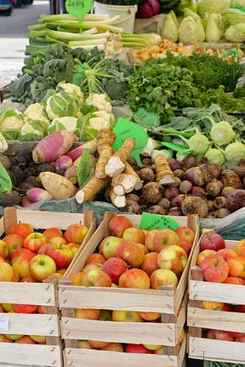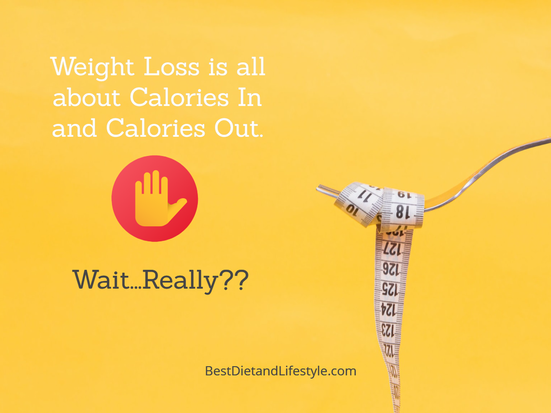Paying Attention to the Type of Calories: a natural way of eating vs. a restrictive way of eating7/1/2022 When it comes to weight loss, the discussion of calories inevitably comes up.
Does paying attention to calories even matter? Yes and no. As we all know, counting calories can be tricky and very time-consuming. It can often put one in a restrictive mindset. We start to plan our days around, “I have to have this vs. that,” when it comes to choosing what to eat, merely based on the number of calories a food has. This is why diet food companies put dessert-like snacks with very few calories in their prepped food options. If you’re counting calories, those would seem like a smart choice. Yet what is really important here, is the quality of the calories. It is very important to be aware of the type of calories that are coming in. For example, are you getting enough protein, and from what source? Protein, fat, and carbohydrates all have calories, but instead of counting them, we should really be conscious of what sources they are coming from. Getting our fats from avocados, walnuts, and fish versus ice cream makes a big difference to our health. They may have the same amount of calories, but their effect on our bodies is completely different. But does this mean there is no room for ice cream? That depends. When a majority of your food is coming from nutrient-dense foods (in other words supplying you with what your body needs), then yes, there is room for ice cream on an occasional basis. There is also room for the occasional sweet treat like ice cream, when one is exerting themselves in activities that burn calories, like yard work and other forms of fitness. (Calories in, calories out.) Calories are not the whole picture when it comes to weight loss, but they are not something to be ignored either. The number of calories matters, yet so does the quality of calories. Here’s were when just paying attention to the number of calories can back fire… When someone consumes less calories than their resting metabolic rate (RMR), the body can go into “starvation mode,” and instead of burning calories (because it’s not getting enough) it will hold onto calories. Also, if those calories are from poor-quality foods then the body will send signals that it has not received enough of the right nutrients, and hunger might pursue. So…. Go ahead and count calories if you’d like, but definitely pay attention to the quality of those calories you are consuming. Your best bet is to put your attention on whole foods from real sources and incorporate exercise that involves both cardio and strength training. (Calorie burn is complicated when it comes to exercise too- it may not matter as much as you think.) Hopefully, for you, this evolves to become more of a natural way of eating. #calories #qualitymatter #wholefoods
0 Comments
 1. Eat vegetables at most meals. Think salads, side dishes, soups, or even adding more veggies to your sandwich or wrap. 2. Have a grain dish like rice, quinoa, barley or millet instead of bread. 3. Have a starchy vegetable like squash or sweet potatoes instead of bread. 4. When you are having a craving for something sweet, opt for a serving of fruit to satisfy your craving. You can even warm up the fruit and sprinkle it with a sweet spice like cinnamon. 5. When you eat meat, it’s best to choose organic, grass fed, and hormone-free so you get the maximum nutrients possible without the harmful pesticides residue, antibiotics, hormones, etc. 6. Follow Michael Pollan’s rule, “If it came from a plant, eat it; if it was made in a plant, don’t.” His book “Food Rules,” is a great book. If you have it, you can pick a rule a day to follow. 64 rules in all. I like #64…”break the rules once in a while.” We have to be realistic here. 7. Limit foods that come from a box. This is easier than you think. Start exploring the bulk section of your super market. You will save money and you will avoid added salt and preservatives. There are plenty of tips when it comes to incorporate more whole foods into your diet. 7 is a great place to start. Heal your mind and body with food!  Simply put…Clean Eating is about moving toward a more natural way of eating. It’s not about counting calories or eliminating food groups. It is about eating more organically grown and locally sourced whole foods. It is about staying away from chemically laden foods such as processed or heavily refined foods; or meats laced with unusually high amounts of hormones and anti-biotics; or “GMO-ed” vegetables and fruits; or meat from animals kept in unsanitary confinement… I think you get the picture. Clean eating can be seen as eating food grown, harvested and raised as Mother Nature intended. So keep these things in mind…. --Spinach, the healthy food that it is, can quickly become unhealthy when it’s grown in soil treated with chemical fertilizer, or sprayed with pesticides or insecticides. --The meat from a cow who was raised on GMO corn and soy, might need more antibiotics, due to the wrong type of food the cow has eaten or how well she is treated. --The skim milk might be less calories, however can our bodies assimilate the fat soluble vitamins that are in the milk without the fat? Have the manufacturers’ taken things out or put things in, that go against the rules of Nature? Let’s start asking more questions! Let’s start being more aware! And let’s start voting with our forks! I don’t know about you, but I prefer quality over quantity when it comes to my food. Why does this matter to you? Because your health now matters!! So you want to be healthy? Stay healthy? Then keep this in mind….eating “clean” can help your get healthier and enable you to maintain great health! 3 tips on making this eating clean mentality your everyday normal….
What type of labels should I look for when shopping for clean meat? Animals raised in a humane and ethical way look for:
Get to know your local farmers. The certified and "approved labels" may not be on the packaging, but once you get to know the farmers through meeting them, or communicating with them via email or the telephone, you will be able to get a better idea of how they feed and treat their animals. Where to start? Go to local Farmers Markets and Stands when the season opens. Here are two local farmers that I know that deliver to a specified location weekly: Debra Loss at [email protected] Reach out to Debra via this email and let her know that you would like to get on her list. McDonald Farm at www.pasturepride.com Contact them via their website. Copyright © 2015 *|Create Health with Ann Treacy|*, All rights reserved  DIET! DIET! DIET! This four letter word is everywhere, especially this time of year with all the New Year’s Resolutions. Diets are a lot like clothes, you have to try them on to see if they fit. A "diet" that works well for someone might not work well with you. So let me help you find the right diet. With the type of lifestyle you lead, the goals you are striving for and the health issues that you have encountered, you can narrow down the choices and tweak each diet to fit your exact needs. Keep in mind the way we do our life is the way we do food. If the diet is too restrictive, too complicated or just doesn't make sense, and your life is also very busy and complicated, then sticking to “the diet” might be difficult. So let’s keep things simple and find the right meal plan that works for you!  I’m pretty sure we are all pretty familiar with the slogan “bet you can’t eat just one,” from Lay’s potato chip brand. Sadly they are right. They have concocted such an edible substance with so much science behind the validity of that slogan. They have added just the right amount of additives to keep you coming back for more. Matter a fact, as I write this blog…I have a craving for some right now. Ugh! As I am sure you are aware, these substances that try to make processed foods more like real food, aren’t very healthy for us. Many of the chemical additives accumulate in our fatty tissues, and if eaten every day, can result in a plethora of diseases and ill-health. It’s time to clean out our pantry! Ready, set, go….here’s your list. 1. Sodium Nitrite or Nitrate 2. BHA and BHT (Butylated Hyroxyanisole and Butlated Hydroxytoluene) 3. Propyl Gallate 4. MSG. This is disguise under many names, such as, natural flavorings, spices, seasoning, and hydrolyzed vegetable protein (HVP); to name just a few. 5. Hydrogenated or Partially Hydrogenated vegetable oils 6. Aspertame (Nutrasweet and Egual) 7. Acesulfame-K (Sunett and Sweet One) 8. Food Colorings (the ones with the numbers!) 9. Olestra 10. Potassium Bromate 11. High-Fructose Corn Syrup 12. Sodium Chloride (Table Salt) 13. Sulfites 14. Evaporated Cane Juice (raises blood sugar, leading to increase in fat) List courtesy of “The Gorgeously Green Diet,” by Sophie Uliano So copy and paste this list…then print it out, walk to your kitchen pantry, look at all the labels and start your detective work. Then repeat the steps for your refrigerator and your freezer. Or hire me and I will come do it for you. I will discuss alternatives to some of your…”I can’t throw these out, I love them” foods. I will also kindly remind you of all the detrimental effects that these chemicals have on our bodies, if you so desire to hear them. This might be hard at first, but keep in mind that this is not just a healthy diet change, it’s a “way of life” change as well. --Be well nourished and eat whole foods! We as a nation have badly develop a habit of relying on the big food manufacturers to tell us what to eat. For most of us, our daily diets are pretty SAD. We shop for convenience and are miss-guided through deception. They have us by our lack of time and our naivety. Since when do store-bought, processed cookies have tons of fiber in them? Since manufactures discovered that fiber is good for us, yet it can’t really come from processed foods, so they add a man-made version of it…which by the way, produces mischievous amounts of… gas. And thus, we see this sort of food as a “health” food and not what it truly is; a sugar-landed, weight producing-processed food.
So my question to you is, how does one get from being a SAD (Standard American Diet) eater to a whole foods, natural eater? I am hoping these 10 tips will help set you on the right path towards healthier eating habits. Here’s to your health! 1) Don’t drink your sugar. Do you want a fast acting, sure-fire way of dropping calories from your diet? Then nix the sugary drinks. Drink water instead. What, you don’t like plain water? Then try adding some lemon to it or a couple drops of essential oil to help make it taste to your liking. Try being creative with it, sip it throughout the day and watch your energy levels stay high! 2) Get enough rest. It’s almost a guarantee that you won’t eat healthy after a 3-4 hour night of rest. Our bodies usually need 7-8 hours. To me, not enough rest means a shoddy willpower mechanism. Your mind and your body will most likely be wanting to reach for a sugary pick me up, which will be harder to fight off when you are super tired. (Water can help a little bit with your tiredness). 3) Make use of your refrigerator. Way back… when they didn't have refrigeration, they used to have to ferment and can stuff, which is healthy in its own right, but now we have refrigeration! Processed foods do well on the shelves, but whole foods usually like it a little colder. The inside of my refrigerator has a lot of color, very little boxes, and ceramic dishes with convenient left overs. No more excuses as to why you can’t get in plenty of servings of fruits and vegetables! Your refrigerator should be filled with things that grew from Mother Nature. 4) Cook mindfully. Be present when you cook. Enjoy the process of knowing that you are creating something that will be nourishment for your body. Let all 5 senses get involved. A grateful attitude will bring joy to the act of cooking. 5) Eat mindfully. If you are stressed while you eat, your digestion will be off. If you are not paying attention, your mind and body will lose sight of what is being eaten, and either you will overeat or eat the wrong foods. Be fully present and fully enjoy the act of eating. Again, all 5 senses should be involved. 6) Square up your meals. Good fats, a little bit of protein, lots of vegetables and a portion of complex low-glycemic carbs. equals ideal weight, lots of energy, and better moods. O.K., there’s a little more to it than this. However, how may meals have you had gone by your chin with nothing green or no healthy fats on the plate? French fries, a cheeseburger and a coke can equal weight gain, no energy and rotten moods. What kind of foods are you choosing from each category? 7) 80/20 rule. 80% of your foods during the day should be wholesome and healthy. 20% gives you wiggle room for those fun foods. If you want to see weight drop off go for a 90/10 rule. These rules say…go ahead have that treat and don’t feel guilty. Just don’t have 5 or 6 unhealthy, naughty foods. 8) Be adventurous. Start exploring new foods. Get out of your comfort zone for a bit and try new healthy foods. Have you had any Jicama lately? Variety is key to a good diet. Same breakfast every morning…boring! And not as healthy as changing it up. Different foods means different nutrients. 9) Eat for nourishment. Every time you eat, it’s a chance to nourish your mind, body and soul. Would you put inferior gas into your car? Probably not. It won’t run very well. Same goes with you. The better you feed yourself, the better you’ll work. 10) Know that you are worth it. You know the effects of poor eating habits. You might be experiencing them now. It’s time to invest in yourself. Give your “self” the nourishing foods that you deserve. You are so worth it! Eating healthy takes a commitment, determination and a vision. Be determined to see all your health goals through! Happy eating! |
It's a blog...I am a fanatic when it comes to uncovering the truths and the falsities to sound nutrition and good health. When we use a little common sense we can back up anything, yet there is always room for debate. Archives
January 2023
Categories
All
|


 RSS Feed
RSS Feed